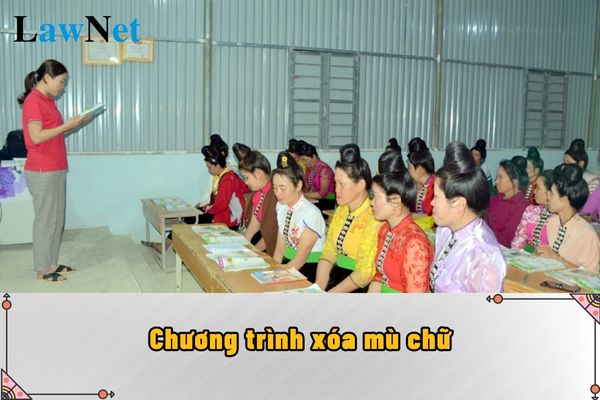What is the periodic assessment of upper secondary school students in Vietnam? What are purposes of the periodic assessment of upper secondary school students in Vietnam?
What is the periodic assessment of upper secondary school students in Vietnam?
According to Clause 2, Article 2 of Circular 22/2021/TT-BGDDT:
Article 2. Interpretation of Terms
In this Circular, the following terms are understood as follows:
...
- Periodic assessment is the activity of evaluating the training and learning results after a stage in the school year to determine the level of task completion in training and learning of students as required by the General Education Program; provide feedback information to education managers, teachers, and students to adjust teaching activities; confirm the students' achieved results.
...
Thus, periodic assessment for upper secondary school students is the activity of evaluating the training and learning results after a stage in the school year to determine the level of task completion in training and learning of upper secondary school students.
The periodic assessment of upper secondary school students will be based on the required achievements stipulated in the General Education Program; provide feedback information to education managers, teachers, and students to adjust teaching activities; confirm the students' achieved results.

What is the periodic assessment of upper secondary school students in Vietnam? What are purposes of the periodic assessment of upper secondary school students in Vietnam? (Image from the Internet)
What are purposes of the periodic assessment of upper secondary school students in Vietnam?
According to Article 3 of Circular 22/2021/TT-BGDDT:
Purpose of Assessment
Assessment aims to determine the level of task completion in training and learning of students as required by the General Education Program; provide accurate and prompt information so that students can adjust their training and learning activities, and education managers and teachers can adjust teaching activities.
Thus, the purposes of assessing upper secondary school students and periodic assessment of upper secondary school students include:
- Assessing to determine the level of task completion in training and learning of students as required by the General Education Program;
- At the same time, providing accurate and prompt information so that students can adjust their training and learning activities, and education managers and teachers can adjust teaching activities.
Additionally, according to Article 4 of Circular 22/2021/TT-BGDDT, the periodic assessment of upper secondary school students must ensure the following requirements:
[1] Assessment is based on the required achievements stipulated in the General Education Program.
[2] Assessment ensures accuracy, comprehensiveness, fairness, honesty, and objectivity.
[3] Assessment is done by various methods, forms, techniques, and tools; combining regular assessment with periodic assessment.
[4] Assessment for the advancement of students; emphasizes encouraging and motivating the efforts in training and learning of students; does not compare students with each other.
What are forms of periodic assessment for upper secondary school students in Vietnam?
In Article 7 of Circular 22/2021/TT-BGDDT, the regulation states that periodic assessment for upper secondary school students includes mid-term and end-term assessments, and these assessments are carried out through exams (on paper or computer), practical exercises, and specific learning projects as follows:
- The duration for exams (on paper or computer) for subjects (excluding study specialization clusters) with up to 70 periods/year is 45 minutes, for subjects (excluding study specialization clusters) with more than 70 periods/year is from 60 to 90 minutes; for specialized subjects, a maximum of 120 minutes.
- For exams (on paper or computer) evaluated by scores, the exam paper is constructed based on the matrix, the specifications of the exam paper, meeting the required achievements of the subject stipulated in the General Education Program.
- For exams (on paper or computer) evaluated by comments, practical exercises, and learning projects, there must be guidelines and evaluation criteria according to the required achievements of the subject stipulated in the General Education Program before implementing.
Additionally, the periodic assessment of upper secondary school students must ensure the following:
[1] In each semester, each subject evaluated by comments has 01 (one) mid-term assessment and 01 (one) end-term assessment.
[2] In each semester, each subject evaluated by a combination of comments and scores has 01 (one) mid-term score assessment (abbreviated as DDGgk) and 01 (one) end-term score assessment (abbreviated as DDGck).
[3] Students who do not participate in the required assessments mentioned in [1] and [2] due to force majeure reasons are allowed to take compensatory assessments with equivalent requirements for the missing assessments. These compensatory assessments are conducted each semester.
[4] If students do not participate in the compensatory assessments mentioned in [3], they will be evaluated as Not achieving or receive 0 (zero) points for the missing assessments.


- What are the sample essays on sharing an experience with a family member for 6th-grade students in Vietnam? What elective subjects do 6th-grade students learn?
- Vietnam: What is Polymer? What is the grade at which the Chemistry curriculum covers Polymer?
- Vietnam: What are the sample social argumentative essays on artificial intelligence? What is the grade at which students initially write social argumentative essays?
- Vietnam: What are the sample discussions on students being late for school? What are the criteria for text corpus used in the 9th-grade Literature curriculum?
- Vietnam: When was the directive on national resistance given? What education level does 9th Grade fall under?
- Vietnam: What is the overview of industrial revolutions over periods in the 10th-grade History curriculum? What knowledge about industrial revolutions do 10th-grade students learn?
- What is the Plan for organizing professional training for English teachers in Ho Chi Minh City about?
- Vietnam: What are the sample outlines of a social argumentative essay on kindness for 9th-grade students? What are the kindness qualities required for 9th-grade students?
- Vietnam: What are the sample argumentative essays on respecting people's differences for 11th-grade students? What are the conditions for 11th-grade students to be eligible for grade advancement?
- Are students pursuing dance in Vietnam eligible for tuition reduction?

